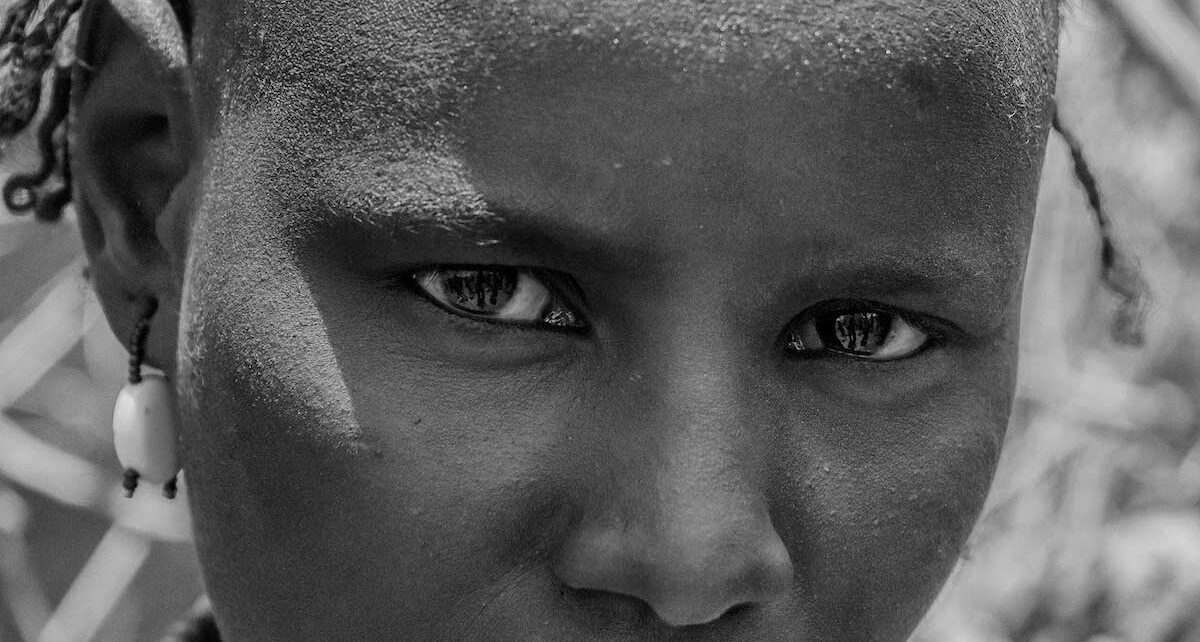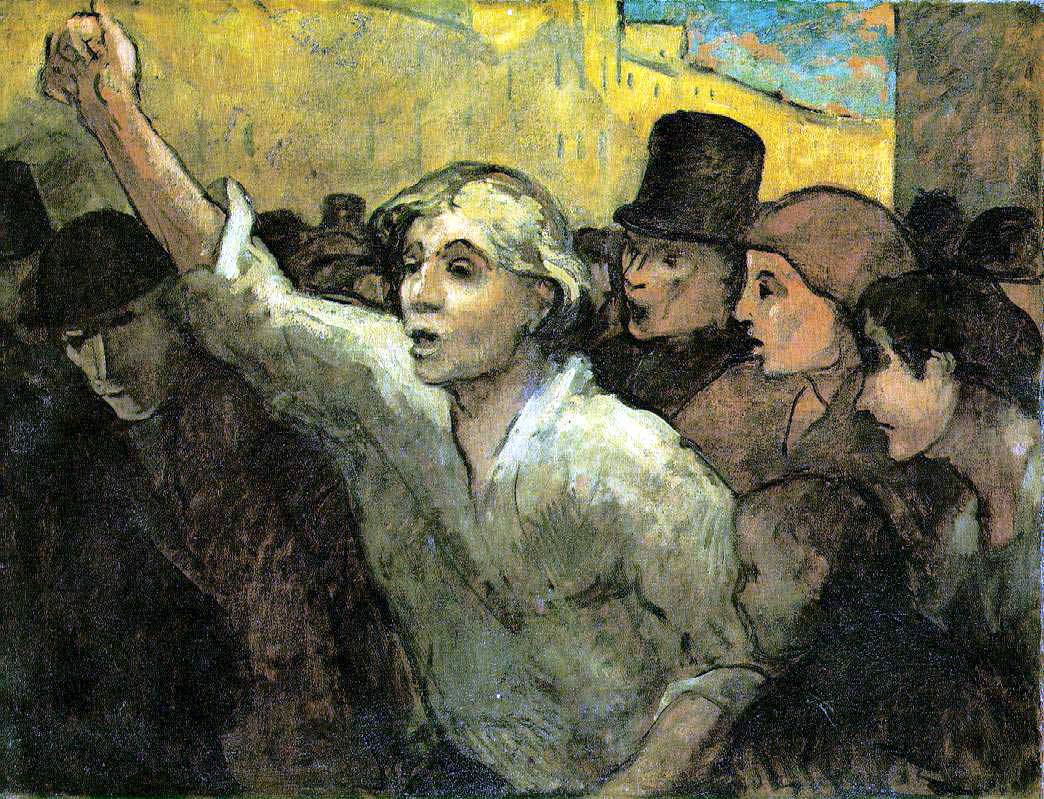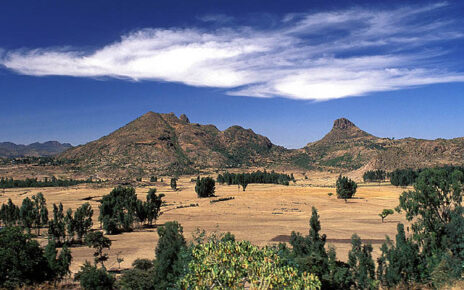The following is the second of a three-part series. The first can be found here.
Tumsa, as a theologian, focused on social justice and the hermeneutical interpretations of Reinhold Niebuhr. He tried to respond to the communities’ struggle through theological reflection and action. As a theologian who studied abroad, his work was affected by the Black American movement and liberation theology and the broader liberation theology and postcolonial discourses.1 Tumsa believed that the primary needs of the Ethiopian society include the spiritual, material, and political. So, a theological approach from the African holistic perspective of life and belonging enabled the church to propose a new way of doing theology.
In the missionaries’ pietistic tradition, social justice ministries were seen as a “means to an end.”2 Tumsa called the pietistic approach and tradition, which focused on spiritual salvation and gave less emphasis to the social and political development of human beings, the old imbalance. On the other hand, the new imbalance, the new missional approach of the missionaries, emphasized liberating human beings from dehumanizing activities such as racism. In this new imbalance, social and material development became a priority, and spirituality became less critical.
The new imbalance was created by guilt that the mission organizations were not able to fulfill their Christian responsibilities due to their colonial practices or emphasis on the African nations. In the old imbalance, human beings’ salvation was interpreted in a way that did not integrate the wholeness of human beings. The Western churches’ participation in slavery and colonization initiated their need to construct a social justice-focused mission approach.
Tumsa and the EECMY church leaders claim that both the old imbalance and the new imbalances are not appropriate and contextual for the Ethiopian context.3
Tumsa’s holistic theology questions the neo-paternalistic approach of mission organizations’ aid criteria that hinders the EECMY’s self-reliance.4 The EECMY’s seventh general assembly passed a resolution to ask LWF to evaluate the mission organizations’ aid criteria. In the resolution, Tumsa and the EECMY leaders question the anthropological and theological definitions of mission agencies.
The EECMY believes that the mission organizations shaped their aid categories through the socio-economic classification that divides people as rich and poor, developed and underdeveloped in terms of material resources and technology. So, the EECMY calls for applying a holistic understanding that accepts human beings as material and spiritual, persons who have agency and subjectivity to frame their development. The central claim of holistic theology is that human beings are not objects of modern progressive thinking because they are subjective agents.5
The officers write:
However, when we in effect are told, by virtue of criteria unilaterally decided by the donor Agencies, what we need and what we do not need, what is good for us and what is not good, then we feel uncomfortable and become concerned about our future.6
The EECMY document advocated for the recognition of human agency so that the EECMY could get support from the mission organizations to address the needs of human beings in their totality.7
Moreover, holistic theology also resisted the Ethiopian feudal emperors’ governmentality, since religion and politics were integrated to colonize bodies of Ethiopians. Tumsa wanted a church and a theological approach that could liberate. Ethiopians spiritually, materially, and politically. Tumsa believed that the church needs to have its independent voice without the imposition of the government. In the imperial government, the Ethiopian Orthodox Church was working with the emperor, and that suppressed the church’s independent voice.
However, the EECMY and Tumsa focused on creating a church that speaks about politics and religion based on their own beliefs and teachings independently for the holistic development of God’s people. So, when the socialist government and political ideology came to Ethiopia, the EECMY and Tumsa were supportive of the socialist political approach to the poor and the oppressed.
According to Gerd Decke, who worked in the LWF and the EECMY from 1971-77, Tumsa’s political perspective was incredibly progressive. One of the known workshops that Tumsa and the EECMY prepared with LWF was “Christianity and Socialism.” According to Decke, the workshop participants were profoundly motivated and touched by socialist Ethiopia. The socialist approach toward the poor and the oppressed, land for peasants, and education for all encouraged them to see a different Ethiopia than an oppressive and feudal one. Decke writes: “The aim of these seminars was not academic study, but [was] meant to enable the Church leadership and eventually the membership to equip themselves for responsible participation in the Ethiopian revolution.8
The theological conversations that were raised in the conferences included: how to use biblical interpretation to resist hierarchical and paternalistic political perspectives and leadership in the Ethiopian context and how a Christian can participate in the class struggle while it is required to love those who do not love us.9 Tumsa was able to overcome the confusion that many African leaders and liberation theologians felt as they struggled to apply socialism as a tool to understand the social and political context of their countries and churches.
Decke writes, “Gudina Tumsa saw the church not only acting for lack of another institution but saw it a prophetic role, pointing out structures of injustice and oppression, as well as acting as an active agent of social change.”10 Even though Tumsa supported the political aspect of socialism that focuses on liberating the poor and the oppressed, he did not support the constitutive approach of socialism that opposes all religious beliefs and practices.
Tumsa’s critical engagement with socialism focused on the church needs to a model for empower its members to end class struggles, and demonstrate peace, reconciliation, and social justice for all people in Ethiopia. Tumsa challenged the church to follow its doctrine and teachings and to engage Ethiopians’ experience while working with socialist political practices and approaches.
Tumsa believed that holistic theology that addresses the spiritual, social, and political could liberate human beings from their total oppression. However, the totalitarian dictatorship of the Ethiopian communist government was not willing to accept the ideological and political challenges that the EECMY and Tumsa presented. As a result, Tumsa was killed by the Ethiopian communist government, and his prophetic voice was silenced.
Decke writes:
In 1976 Gudina took up the quasi-religious holistic philosophical challenge of Marxism, as a competitor to the Christian faith trying to attract people’s complete allegiance. He clearly rejects any such claim of Marxism as valid, while he still appreciates its political and social challenges, which he takes as an opportunity for the church to live up to its own best impulses of justice, democracy and human rights.11
I would claim that Tumsa and his prophetic voice were historic in-between theological responses that the Ethiopian community still needs today. His radical approach for integrating material and spiritual, religion and politics, and Ethiopian and Western contextual theologies resists “purity” of spiritual ministries and gives a voice for hybridity. Tumsa’s critical approaches toward imposed Western theological and religious perspectives nurture theological and political dialogue. Tumsa was against fundamental and totalitarian religious and political regimes.
Despite his call for justice and inclusivity, Tumsa’s voice was silenced by the communist regime and by the church that focuses only on the social and material without integrating justice and politics into holistic theology. I claim that Tumsa’s holistic theology might be a steppingstone for starting a theological conversation to create in-between spaces and consciousness for Ethiopians.
Holistic theology affirms that human dignity and rights need to be elevated through language, economic, social, and political equality, and development beyond the imposed political ideologies and governmentalities of the feudal emperors and the Derge. As a church that claims holistic human development, the EECMY maintains its indigenous theological, cultural, economic, and missional identity while maintaining its national and international relationship with Western churches. The church focuses on theological and cultural reflection that uses the language and the culture of Ethiopians.
The EECMY supported cultural and linguist studies. Likewise, local Bible schools and theological reflections empowered contextual theologies to start self-reliance and self- initiated mission and ministry works.
Beyond Holistic Ministry’s Multiethnic Approach
Tumsa’s holistic theology that focuses on empowering Ethiopians to claim their agency and subjectivity with a holistic theological approach was limited due to its emphasis on creating a multiethnic rather than an intercultural Ethiopia. The establishment and growth of the EECMY and its theology empowered the multiethnic approach through Bible translation, literacy, education, and theological beliefs and teachings on human dignity and rights. Along with the peasants and other working-class Ethiopians, the university and high school students resisted the Ethiopian feudal emperors’ governmentality that employed the Amharic language as a central identification for Ethiopians. Tumsa and the EECMY also constructed a theological response that resisted the imposed and fictive Amharic identity.
According to Hofmann, in 1973, the imperial government of Haile Selassie reviewed educational programs and gave more privileges to the Amharic language and Amharic speakers. The new program created much resistance among diverse ethnic groups in Ethiopia. For Tumsa, ethnic identity, being Oromo in his case, was central to his existence as human; he questioned the imposition of the Amharic language by claiming his ethnic identity as central to his humanity.12
Tumsa’s multiethnic approach opposed the Amhara fictive identity through a hereditary ethnic approach or singular identity. I, however, argue that the multiethnic approach did not enable the EECMY and Ethiopians to resist the fictive Amhara identity. The multiethnic approach of Tumsa did not tell us how diverse ethnic groups could live together in Ethiopia or in the EECMY beyond declaring their diversity. A multiethnic approach focuses more on the self determination of each ethnic group rather than articulating the subjective identity of Ethiopians in the postcolonial context.
The political application of ethnic politics divided and created war and violence resulting in the current identity politics in the Ethiopian context. The church did not effectively respond to the crisis of identity politics because it lacks a theological response beyond the multiethnic approach. In the era of Ethiopian identity politics, the EECMY needs a theological response that could enable Ethiopians to live in the in-between spaces with in-between consciousness. In-between theology may enable Ethiopians to transcend ethnic hereditary identity and fictive Amhara identity with a consciousness that demonstrates in-between spaces for all Ethiopians in schools, religious organizations, and regional states.
In- between spaces are socially, politically, and spiritually just and liberating spaces that demonstrate Ethiopians’ ability to live with self-dignity that accepts the other, whether that other is like no other, like some others, and like all others.13
Tumsa’s holistic approach resisted pietism; however, the impact of pietism is an inevitable reality among Ethiopian evangelical believers including the EECMY. The EECMY is not only impacted by Western missionaries but also by the EOC’s ascetic approaches to spirituality. The Ethiopian Orthodox Church’s focus on ascetic life and spirituality comes from the church of Alexandria and the Greek theology that the church incorporated through the centuries. Tumsa resisted the imported pietistic approach, and he was clear in articulating the colonial nature of the EOC concerning the feudal emperors.
However, he did not question EOC’s ascetic spirituality. I would imagine a different evangelical Christianity and Mekane Yesus if Tumsa had focused on questioning the EOC’s ascetic spirituality and its impact on Ethiopians’ holistic development. On the other hand, the liturgy and worship focus of the EOC impacted evangelical Christianity enabling it to resist an exclusively dogmatic and conceptual approach to the religion of the West. Worship gives evangelical Christians embodied agency to live their Ethiopian identity by creating songs and worship rhythms that connect to their cultural reality.
Still, I claim that Tumsa’s prophetic voice was an important initial place for creating in-between spaces and consciousness for Ethiopians. It calls for the integration of religion and politics to create a just society that flourishes holistically. However, Tumsa’s voice was not only silenced by the communist government, it was also silenced by the church that was unwilling to continue his legacy. The main challenge that the church faced in the time of the Derge was persecution. Many churches were closed, their leaders were executed and imprisoned.14 Of course, Derge’s persecution did not stop evangelical churches from following their faith and preaching the gospel message.
However, the political and critical engagement that Tumsa initiated with the political powers was silenced to create peace with the communist government. As Decke mentions, some of the EECMY leaders became part of the Derge’s cabinet, compromising Derge’s oppressive policy.15
After Tumsa died, the EECMY did not speak for social justice and equality. In the communist regime and even after the current EPRDF came to power, the EECMY applied holistic theology’s spiritual and social aspects, but not the political. Since the EECMY’s development office focuses on social development, the political and spiritual aspects are divided from the original concept and practice.
The church never speaks against the political oppression and injustice that the EPRDF and the current Prosperity Party is implementing in Ethiopia. Instead of speaking for social justice and political issues, religious organizations in Ethiopia prefer to work under the Ethiopian Religious Council, which originated with and is organized by the EPRDF. They speak about peace without justice that would normalize the political struggle and questions of Ethiopians.
So, the holistic theological approach that Tumsa started in the EECMY was silenced by the church leaders who prefer to approach the political aspect as a minor issue by focusing only on the social and spiritual aspects of holistic theology.
The other limitation of holistic theology is its focus on conversion. Tumsa believed that contextual and African theology is important for Ethiopians and Africans. Even though Tumsa resisted imposed Western theologies, the conversion-focused approach of holistic theology did not enable evangelical Ethiopians to create in-between consciousness. The evangelical faith tradition explicitly focuses on evangelizing and converting non-believers to the evangelical faith tradition.
Eide argues that evangelical Christianity gave the Oromo and other oppressed groups an authentic voice due to its focus on Bible translation and preaching the gospel in the ethnic tongue. Eide writes, “To Oromo, whilst being subjugated and humiliated under Amhara rule, the Bible in the Oromo language offered an unprecedented rallying point.”16
Rode Molla is an assistant professor at Virginia Theological Seminary.
______________________________________________________________________________
1ØYvind M. Eide, “Integral Human Development: Rev. Gudina Tumsa’s Contribution to the Understanding of a National Church, Partnership, and Interdependence in a Global Church, as Viewed and Developed in the EECMY” in The Life and Ministry of Gudina Tumsa: Lectures and Discussions Missiological Seminar 2001, 2nd ed. The Gudina Tumsa Foundation (Hamburg, Germany: WDL- Publishers), 40-44.
2EECMY Officers, “On the Interrelation of Proclamation of the Gospel and Human Development (EECMY Letter to the Lutheran World Federation, May 1972)” in Witness and Discipleship Leadership of the Church in Multi-Ethnic Ethiopia in a Time of Revolution (Addis Ababa: Gudina Tumsa Foundation, 2003), 88.
3 EECMY Officers, Presented by Gudina Tumsa, “Serving the Whole Man; A Responsible Church Ministry & a Flexible International Aid Relationship (Lutheran World Federation Consultation, Nairobi, October 1974)” in Witness and Discipleship Leadership of the Church in Multi-Ethnic Ethiopia in a Time of Revolution (Addis Ababa: Gudina Tumsa Foundation, 2003), 121.
4 EECMY Officers, Presented by Gudina Tumsa, “Serving the Whole Man,”120-121.
5 EECMY Officers, “On the Interrelation of Proclamation of the Gospel and Human Development,” 81-94.
6 EECMY Officers, “On the Interrelation of Proclamation of the Gospel and Human Development,” 85.
7 EECMY Officers, “On the Interrelation of Proclamation of the Gospel and Human Development,” 88-93.
8 Gerd Decke, “The Role of Gudina Tumsa in a Critical Dialogue between Marxism/Socialism and Christianity” in The Life and Ministry of Gudina Tumsa: Lectures and Discussions Missiological Seminar 2001, 2nd ed. The Gudina Tumsa Foundation (Hamburg, Germany: WDL-Publishers), 105.
9 Decke, “The Role of Gudina Tumsa in a Critical Dialogue,” 105.
10 Decke, “The Role of Gudina Tumsa in a Critical Dialogue,” 113.
11 Decke, “The Role of Gudina Tumsa in a Critical Dialogue,” 127.
12 Paul Hoffman, “Gudina Tumsa’s Legacy: His Spirituality and Leadership” in The Life and Ministry of Gudina Tumsa: Lectures and Discussions Missiological Seminar 2001, 2nd ed. The Gudina Tumsa Foundation (Hamburg, Germany: WDL-Publishers), 31.
13 Emmanuel Y. Lartey, In Living Color: An Intercultural Approach to Pastoral Care and Counseling 2nd ed. (London: Jessica Kingsley Publisher, 2003).
14 Øyvind M. Eide, Revolution & Religion in Ethiopia 1974-1985 (Oxford: James Currey, 2000),
183-200.
15 Decke, “The Role of Gudina Tumsa in a Critical Dialogue,” 116-118
16 Eide, Revolution & Religion in Ethiopia, 74.




